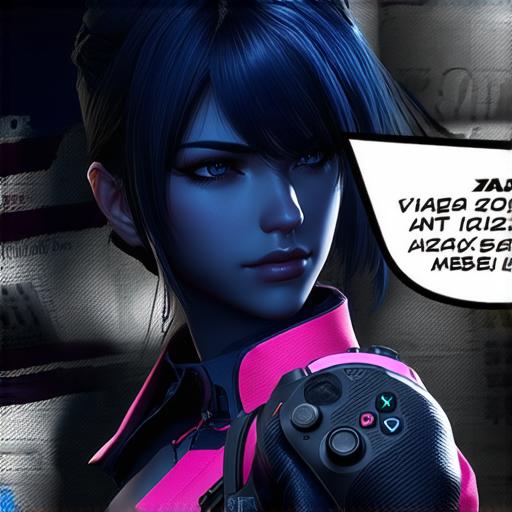
As video games continue to evolve and gain popularity, one aspect of their design that has come under scrutiny is the sexualization of female characters. While some argue that this is simply an artistic choice, others contend that it perpetuates harmful gender stereotypes and contributes to a culture of objectification. In this article, we will explore the reasons behind the sexualization of female video game characters and examine the potential consequences.
Sexualization in Video Games: A Brief History
The history of sexualization in video games can be traced back to early arcade machines and home consoles of the 80s and 90s. The most famous example of this is probably the character of Bayonetta from the eponymous game series, who was first introduced in 2009. Bayonetta’s appearance was characterized by a highly detailed and exaggerated design that drew attention to her curves and assets, which were accentuated by the use of skimpy clothing and intricate hairstyles.
While Bayonetta is perhaps the most iconic example of sexualized video game characters, she is not alone in this regard. In fact, female characters in video games have been sexualized to varying degrees for decades. The reason behind this can be attributed to a number of factors, including societal norms and expectations, the influence of Japanese culture, and the desire to appeal to a particular audience.
Societal Norms and Expectations
One of the primary reasons behind the sexualization of female characters in video games is the prevailing societal norms and expectations surrounding gender roles. In Western cultures, women are often expected to be attractive and sexually alluring, while men are expected to be strong and powerful. This dynamic can be seen in many aspects of our culture, from advertising to fashion.
In the world of video games, this expectation has translated into a focus on female characters who are sexualized and objectified for their physical appearance. By presenting these characters as objects of desire, developers hope to tap into the male gaze and create a sense of excitement and anticipation among players. This approach is not limited to video games, but can be seen in many other forms of media, including movies, television shows, and magazines.
The Influence of Japanese Culture
Another factor that has contributed to the sexualization of female characters in video games is the influence of Japanese culture. Japan has a long and rich history of anime and manga, which have had a significant impact on the design of video game characters, particularly those in role-playing games.
In these games, female characters are often designed to be highly sexualized and objectified, with exaggerated curves and features that draw attention to their physical attributes. This style is sometimes referred to as “fanservice,” and it is seen as a way to appeal to Japanese audiences who enjoy this type of content.
While the influence of Japanese culture on the design of video game characters is undeniable, it is important to note that sexualization is not limited to games from Japan. Developers from around the world have been known to incorporate elements of Japanese art and culture into their designs, even if they are not explicitly targeting a Japanese audience.
The Desire to Appeal to a Particular Audience
Finally, the desire to appeal to a particular audience is another factor that has contributed to the sexualization of female characters in video games. Many developers have recognized that certain types of content resonate more strongly with certain groups of people and have designed their games accordingly.
For example, a developer might create a game that appeals primarily to a male audience by presenting it with heavily sexualized female characters. Alternatively, a developer might design a game that is targeted towards younger audiences by incorporating bright colors and cute characters into the design.
While this approach can be effective in attracting players and generating interest, it also perpetuates harmful gender stereotypes and reinforces problematic attitudes towards women.




